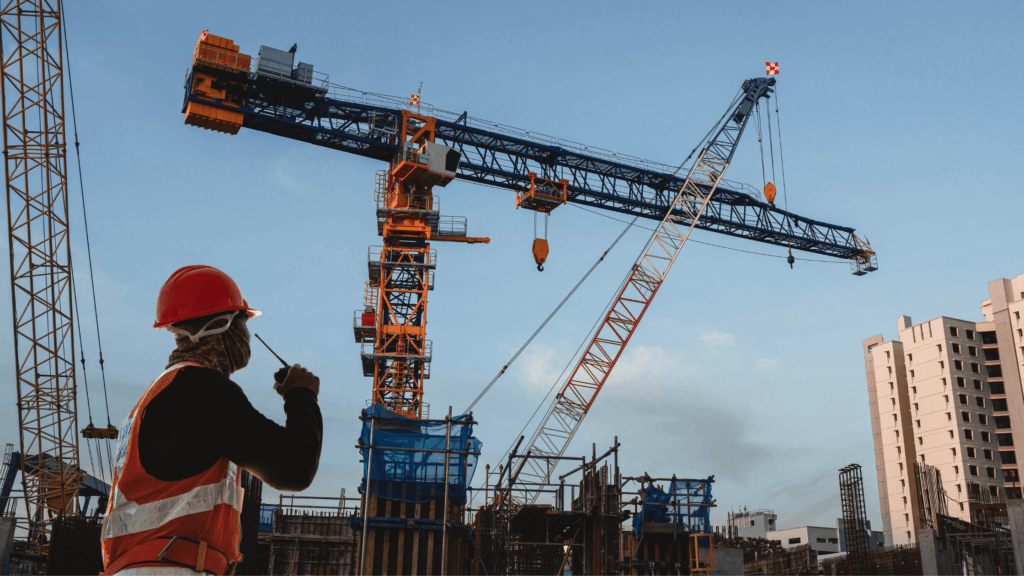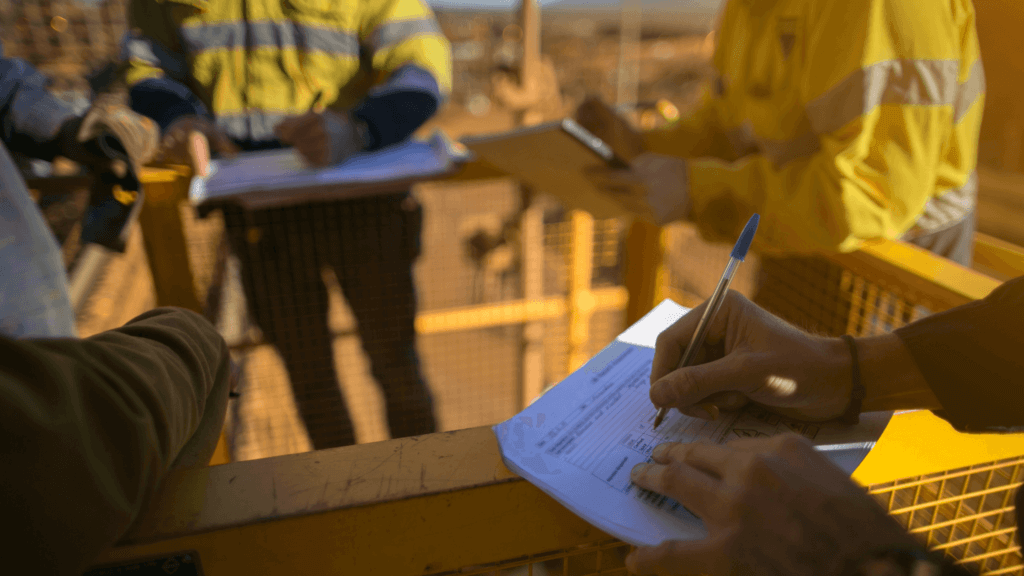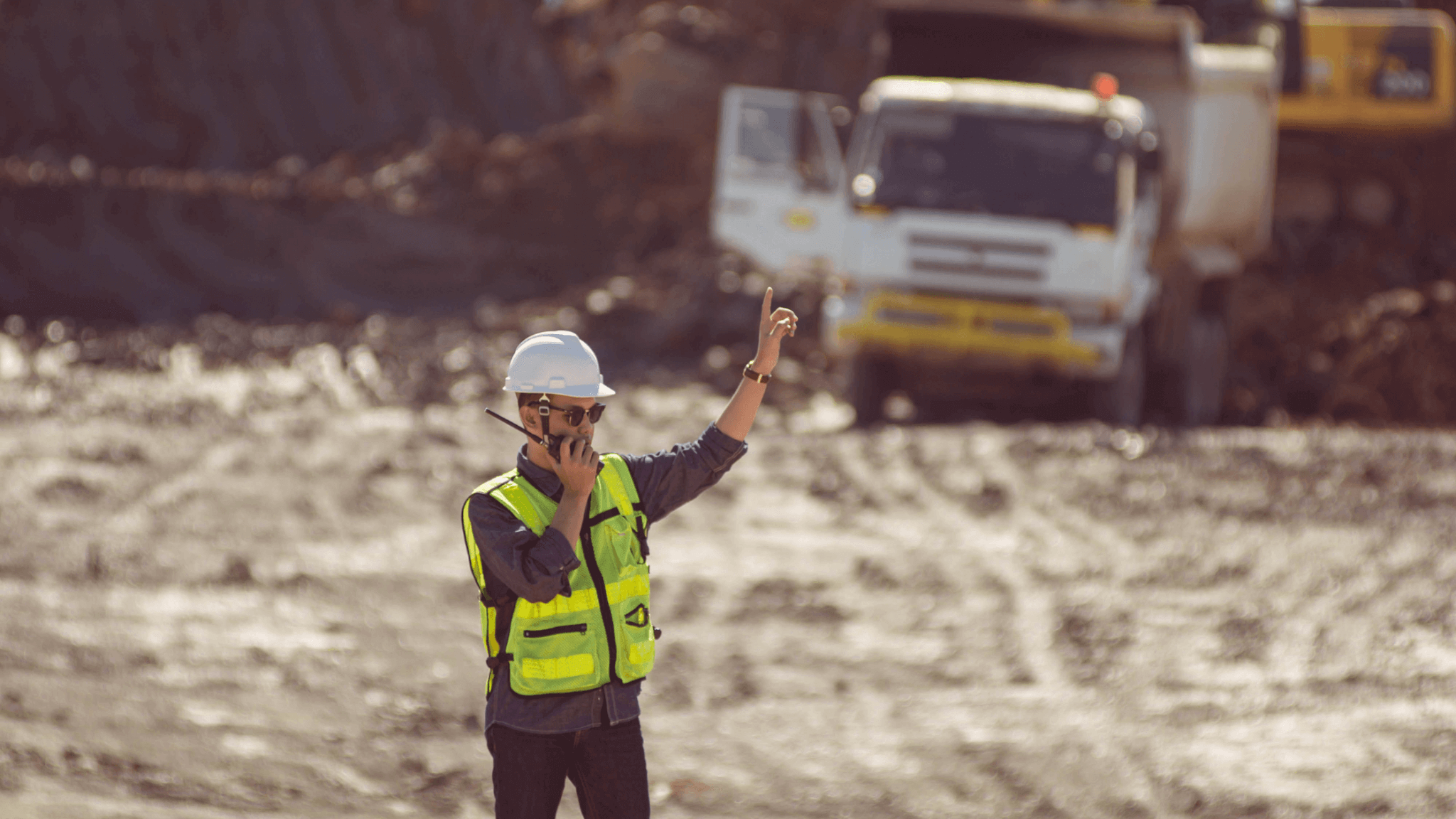A job site can be full of hazards, but clear and effective safety communication makes all the difference in keeping workers safe. What is a good communication strategy for safety messages? It ensures every worker understands potential risks, emergency protocols, and the best ways to prevent accidents. Strong safety communication reduces injuries and creates a culture where everyone feels responsible for keeping the workplace safe.
Quick look
- Clear safety messaging reduces workplace hazards, improves response times, and fosters a culture of accountability.
- OSHA reports language barriers contribute to 25% of job site incidents, emphasizing the need for inclusive safety strategies.
- Establishing safety committees, using visual aids, and leveraging technology ensure workers stay informed and compliant.
- Annual safety reviews and real-time alerts help companies adapt to new risks and maintain a safer job site.
Why safety communication is important on job sites

Effective communication is the backbone of workplace safety, especially on bustling job sites where hazards are ever-present. When safety messages are clear and consistently conveyed, everyone is better equipped to recognize risks, adhere to protocols, and respond swiftly to emergencies.
The impact of poor communication on workplace safety
Miscommunication or lack of communication can lead to severe consequences. For instance, a recent OSHA survey found that language barriers contribute to 25% of on-the-job accidents, particularly in industries involving heavy machinery and high risk:
- Fatalities and injuries: In 2023, there were 5,283 fatal work injuries in the United States, equating to a rate of 3.5 deaths per 100,000 full-time workers. While not all these incidents stem from communication failures, the data highlights the importance of effective safety communication in preventing such tragedies.
- Economic impact: Poor communication and data management in the construction industry have been linked to over $177 billion in labor costs annually. Nearly half of all rework on construction sites results from miscommunication and inaccurate data. This financial burden reflects the tangible costs of inadequate safety communication.
How clear safety messaging can improve safety culture
Implementing clear and effective safety communication strategies can lead to:
- Reduction in incidents: A recent study found that effective safety communication is vital in reducing workplace incidents. Organizations can create a safer work environment by sharing safety information and influencing staff behavior and attitudes.
- Improved response time: When safety protocols are well-communicated and regularly reinforced, workers respond more quickly and appropriately to emergencies, minimizing potential harm.
- Enhanced compliance: Clear communication about safety standards and procedures fosters a culture of accountability, making employees more likely to adhere to regulations and best practices.
What is a good communication strategy for safety messages?

Good safety communication doesn’t happen by accident—it requires a structured approach. Job sites are fast-paced, high-risk environments where miscommunication can lead to serious consequences. Companies can significantly reduce workplace hazards by implementing clear, consistent, proactive communication strategies.
Establish safety committees
One of the best ways to improve safety communication on a job site is to form a dedicated safety committee. These teams bridge management and employees, ensuring that safety protocols are enforced and continuously improved.
Assign safety representatives
A safety committee should include representatives from different roles within the company, from frontline workers to supervisors. This ensures that safety messages reach all workforce levels, creating a culture where everyone feels responsible for job site safety. These representatives can:
- Communicate updated safety policies to teams
- Conduct regular safety audits to identify potential risks
- Serve as go-to points of contact for reporting concerns
Encourage employees to speak up
Safety is a two-way street. When workers feel heard and valued, they’re more likely to report hazards before they become incidents. However, many employees hesitate to speak up, fearing backlash or thinking their concerns aren’t serious enough.
To foster an open environment, safety committees should:
- Hold regular meetings where employees can voice concerns
- Implement anonymous reporting options for those hesitant to speak publicly
- Recognize and reward proactive safety behavior to reinforce the importance of engagement
Maintain an open channel for employee feedback
A one-sided approach to safety communication—where information only flows from the top down—can create gaps in awareness, accountability, and trust on the job site. To build a safety culture, workers must feel comfortable voicing concerns, reporting hazards, and suggesting improvements without fear of backlash. This is where two-way communication becomes critical.
Anonymous reporting tools and open-door policies
Not all employees feel comfortable reporting safety issues directly, especially if they’re worried about retaliation or being seen as troublemakers. Providing anonymous reporting tools, such as digital platforms, suggestion boxes, or hotlines, allows workers to share concerns freely without fear of consequences.
Additionally, leadership should implement an open-door policy where employees can bring up safety concerns at any time without the need for formal processes. Open-door policies work best when:
- Supervisors actively listen and respond to concerns without dismissing them
- Employees see real changes based on their feedback, reinforcing that their input matters
- Safety concerns are addressed promptly to prevent minor issues from escalating
Why two-way communication matters in workplace safety
When workers are involved in safety discussions, they become more engaged and invested in workplace safety. Two-way communication allows companies to:
- Identify risks faster: Workers on the ground often spot hazards before management does, making their input invaluable.
- Improve compliance: Employees are more likely to follow safety protocols when they understand their reasoning.
- Strengthen trust: When employees see that their concerns lead to action, they feel valued, making them more likely to speak up.
Use visual aids
Not everyone processes information the same way, and on a busy job site, long safety briefings or dense manuals can easily be overlooked. Visual aids—like signage, posters, and digital displays—help reinforce safety protocols in a clear, immediate, and accessible way.
The power of signage, posters, and digital displays in reinforcing safety protocols
Well-placed warning signs, instructional posters, and digital screens serve as constant reminders of job site hazards and proper safety procedures. These visual tools are handy when workers may not have time to stop and read lengthy safety documents. Effective visual aids can:
- Highlight common workplace hazards, such as fall risks, electrical dangers, or required PPE
- Provide step-by-step emergency response instructions, like evacuation routes or first-aid procedures
- Offer real-time updates via digital displays, ensuring that safety information stays current
How visual cues help non-native speakers or new employees quickly understand risks
Many job sites employ a diverse workforce, including non-native speakers and new hires who may not be familiar with safety protocols. Visual aids help bridge this gap by:
- Using universally recognized symbols (e.g., hazard symbols, PPE icons, stop signs) to convey critical messages
- Incorporating color-coded warnings (e.g., red for danger, yellow for caution, green for safety) to make information instantly recognizable
- Providing simple diagrams or illustrations that show proper procedures without requiring extensive reading
Develop standard operating procedures
When it comes to workplace safety, consistency is key. Without clear, standardized instructions, workers may handle hazards and emergencies differently, increasing the risk of accidents. Standard Operating Procedures (SOPs) provide step-by-step guides that ensure everyone follows the same safety protocols, reducing confusion and improving job site safety.
Creating step-by-step guides for handling hazards and emergencies
A well-documented SOP outlines the steps workers should take when faced with potential hazards, ensuring quick and effective responses. These guides should cover:
- Emergency protocols, such as fire evacuation routes, first-aid response, and severe weather procedures
- Hazard-specific safety measures, like handling dangerous machinery, working at heights, or managing hazardous materials
- PPE requirements, including when and how to wear protective gear for different tasks
The best SOPs are written in simple, straightforward language and include visual aids, such as diagrams or flowcharts, to help readers understand them.
Ensuring consistency in safety training across teams
Training can vary between teams without standardized safety procedures, leaving gaps in knowledge and increasing risks. When everyone is on the same page, workplace safety becomes second nature; by developing clear, accessible SOPs, companies create a safer work environment where employees know precisely what to do in any situation:
- Providing a single reference point for all safety training
- Ensuring new hires receive the same safety instructions as experienced workers
- Making it easier to update and communicate new safety protocols
Implement Yearly Safety Training Reviews
Safety protocols and regulations are continually evolving in the job site environment. To keep pace with these changes and ensure the well-being of all employees, it’s essential to update safety training programs annually for:
- Regulatory compliance: OSHA guidelines often mandate regular training to align with the latest safety standards. Annual updates help organizations stay compliant and avoid potential penalties.
- Adaptation to new hazards: As job sites introduce new equipment or processes, previously unidentified hazards may emerge. Regular training ensures that employees are aware of and prepared to handle these new risks.
- Reinforcement of safety culture: Annual training consistently reminds the organization of its commitment to safety, fostering a culture where safe practices are prioritized.
Leverage technology for real-time alerts
Often, seconds can make the difference between a near miss and a serious accident. Traditional safety communication methods, like bulletin boards and toolbox talks, are essential—but they don’t always provide immediate updates when hazards arise. By leveraging technology for real-time alerts, companies can enhance workplace safety and keep workers informed.
Using safety apps, mass notifications, and wearable tech to prevent incidents
Modern technology has made it easier than ever to communicate safety messages instantly. Companies are now using:
- Safety apps: Mobile apps allow workers to receive instant updates on job site hazards, weather warnings, and emergency procedures. Some apps even let employees report safety concerns in real-time.
- Mass notification systems: Automated alerts via SMS, emails, and loudspeaker systems ensure that critical safety information reaches all workers simultaneously.
- Wearable safety tech: Smart helmets, vests, and badges with sensors can detect hazardous conditions like extreme heat, toxic gas exposure, or worker fatigue and send alerts before incidents occur.
The role of instant communication in emergency response
When an emergency strikes, delayed or unclear communication can lead to chaos. Whether it’s a fire, a chemical spill, or a structural failure, every worker needs to know what’s happening and how to respond—immediately. Real-time alerts help by:
- Providing step-by-step emergency instructions to all workers at once
- Pinpointing affected areas so workers know where to evacuate
- Enabling two-way communication, allowing workers to confirm their safety or request help
For example, geofencing technology in mass notification systems ensures that only workers in a specific risk zone receive alerts. This prevents unnecessary panic while directing critical messages where they are most needed.
Bottom line
Workplace safety isn’t just about following rules—it’s about ensuring every worker understands and acts on critical safety information in real-time. When communication is clear, consistent, and accessible, job sites become safer, accidents decrease, and employees feel empowered to speak up about potential hazards.
Safety isn’t a one-time effort—it requires constant evaluation and improvement. Companies that regularly assess and update communication strategies stay ahead of potential risks and foster a culture where safety comes first.
Want to stay updated on the latest workplace safety insights? Subscribe to our newsletter and follow us on social media for expert tips, industry updates, and best practices to keep your job site safe.



1 comment